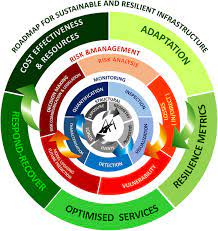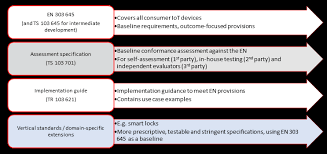The functioning of society depends on the transportation of goods and persons. The infrastructure required to enable transportation is built to ensure that this can happen safely and smoothly, providing specified high levels of service. As Europe has already experienced on many occasions, reductions in service due to potentially disruptive events, such as floods, earthquakes, heavy snow falls, fog, high winds, or cyberattacks can have significant societal consequences.
In this context, transport infrastructure managers must minimize the impact and potential consequences of these disruptive events. To do so, objective information on the service provided by their transport infrastructure and its resilience to external adverse events is necessary. In order to help them acquire this information, in November CEN and CENELEC published new CWA 17819:2021 'Guidelines for the assessment of resilience of transport infrastructure to potentially disruptive events'. This document provides managers with guidance to proceed a complete and systematic definition of service and measure resilience, in all situations with which the manager is confronted, and to help identify the suitable interventions to enhance such resilience.
CWA 17819:2021 is freely available for download here. It was developed by CEN/CLC/WS 018 ‘Assessment of the resilience of transport infrastructure to potentially disruptive events’, whose Secretariat is held by UNE, Spain’s National Standardization Institute.
Following its cartoon “Standards@Rail”, CEN & CENELEC conclude the European Year of Rail with a new campaign to share with the European citizens the importance of European standards in the daily life of trains and railways infrastructure.
In each video, railways experts of CEN/TC 256 ‘Railways applications’ and CLC/TC 9X ‘Electrical and electronic applications for railways’ present to the public a selection of European standard that directly contributes to a safe, efficient, and resilient railways network in Europe: from cybersecurity and wheels to driver's cab displays, aerodynamic or hydrogen refuelling. With these videos, the European citizens can better understand the role of these standards to overcome the current and future challenges met by the railways industry and operators to facilitate the everyday life of travellers and freight transport
he Commission has taken action to improve the cybersecurity of wireless devices available on the European market. As mobile phones, smart watches, fitness trackers and wireless toys are more and more present in our everyday life, cyber threats pose a growing risk for every consumer. The delegated act to the Radio Equipment Directive adopted today aims to make sure that all wireless devices are safe before being sold on the EU market. This act lays down new legal requirements for cybersecurity safeguards, which manufacturers will have to consider in the design and production of the concerned products. It will also protect citizens' privacy and personal data, prevent the risks of monetary fraud as well as ensure better resilience of our communication networks. The delegated act will be complemented by a Cyber Resilience Act, recently announced by President von der Leyen in the State of the Union speech, which would aim to cover more products, looking at their whole life cycle. Today's proposal as well as the upcoming Cyber Resilience Act follow up on the actions announced in the new EU Cybersecurity Strategy presented in December 2020.
ETSI has released the test specification for the existing ETSI EN 303 645, the world leading consumer IoT security standard. This test specification, ETSI TS 103 701, describes how a conformity assessment is performed in a structured and comprehensive way. This will allow supplier organizations such as manufacturers, vendors or distributers to assess the compliance of their devices against ETSI ETSI EN 303 645 in self-assessments or via testing labs. User organizations can also apply the test specification for in-house testing.
ETSI EN 303 645, released in June 2020, involved all stakeholders of the IoT cybersecurity landscape and was developed with industry, academics, testing institutes and international government bodies. As more consumer devices connect to the internet, the cybersecurity of the Internet of Things (IoT) has become a growing concern. The EN is designed to prevent large-scale, prevalent attacks against smart devices that cybersecurity experts see every day.









